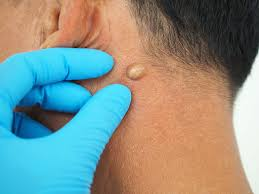5 Ways an Upper Endoscopy Procedure Can Be Beneficial
The human digestive system is very important for overall health, but sometimes, problems like stomach pain, difficulty swallowing, or unexplained nausea can occur. In such cases, doctors may recommend an upper endoscopy.
This is a simple medical procedure that allows doctors to look inside the upper part of the digestive system using a thin, flexible tube with a camera. The procedure is quick, safe, and helps diagnose and treat many health issues. In this article, we will discuss five important benefits of an upper endoscopy.
1. Helps Diagnose Digestive Problems
One of the main reasons people undergo an Upper Endoscopy Procedure is to find out the cause of digestive problems. If someone is experiencing symptoms like frequent heartburn, long-term stomach pain, vomiting, or trouble swallowing, an endoscopy can help doctors see what is wrong.
The camera in the endoscope provides a clear view of the esophagus, stomach, and the upper part of the small intestine. This helps doctors identify issues like inflammation, ulcers, or infections that might be causing discomfort.
2. Detects and Treats Stomach Ulcers
Stomach ulcers are painful sores that can develop in the stomach lining due to infections or long-term use of certain medications. If left untreated, ulcers can cause serious complications such as bleeding. An upper endoscopy helps doctors detect ulcers at an early stage.
In some cases, doctors can even treat ulcers during the procedure by stopping bleeding or removing harmful tissue. This can provide relief from pain and prevent the condition from getting worse.
3. Helps Identify Cancer and Precancerous Conditions
Early detection of cancer is very important for successful treatment. An upper endoscopy can help doctors find signs of stomach or esophageal cancer before they become serious. During the procedure, if doctors notice anything unusual, they can take a small tissue sample (biopsy) for further testing.
This can help detect cancer or precancerous conditions early, allowing for timely treatment and a better chance of recovery. Regular screenings using endoscopy are recommended for people at higher risk.
4. Removes Foreign Objects and Growths
Sometimes, people accidentally swallow objects that get stuck in their throat or stomach, especially children. An upper endoscopy can help remove these objects safely without the need for surgery. The procedure is also useful for removing polyps, which are small abnormal growths that can develop in the digestive tract.
While most polyps are harmless, some can turn into cancer over time. Removing them early can prevent serious health problems.
5. Provides Relief for Acid Reflux and GERD
Acid reflux occurs when stomach acid moves up into the esophagus, causing heartburn and discomfort. If acid reflux happens often, it can lead to a condition called gastroesophageal reflux disease (GERD), which can damage the esophagus over time.
An upper endoscopy allows doctors to check for damage caused by acid reflux and provide treatments to help manage symptoms. In some cases, the procedure can also help doctors widen a narrowed esophagus, making it easier for a person to swallow food.
Conclusion
An upper endoscopy is a very useful procedure that can help diagnose and treat many digestive problems. It allows doctors to find the causes of stomach pain, detect ulcers, identify cancer at an early stage, remove harmful objects or growths, and provide relief from acid reflux.
The procedure is quick, safe, and can prevent serious health issues in the future. If you are experiencing digestive discomfort, consulting a doctor about an upper endoscopy might be a good step toward better health.


